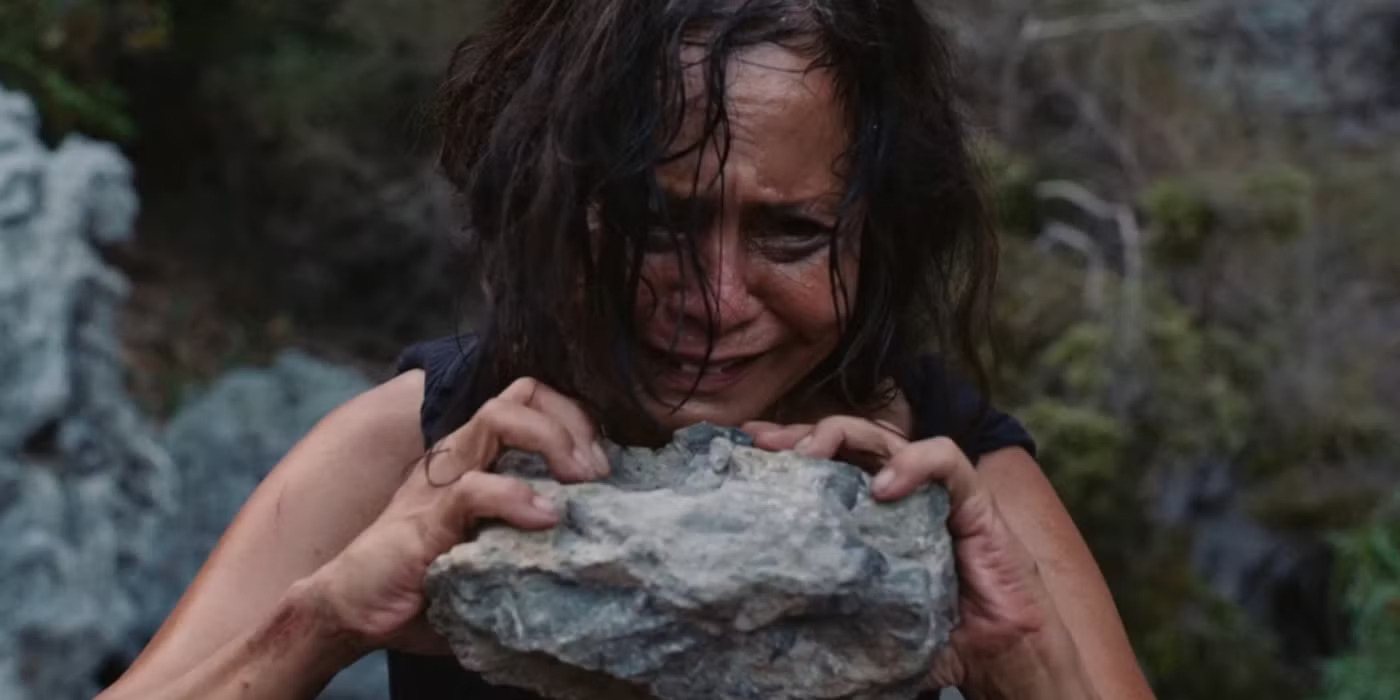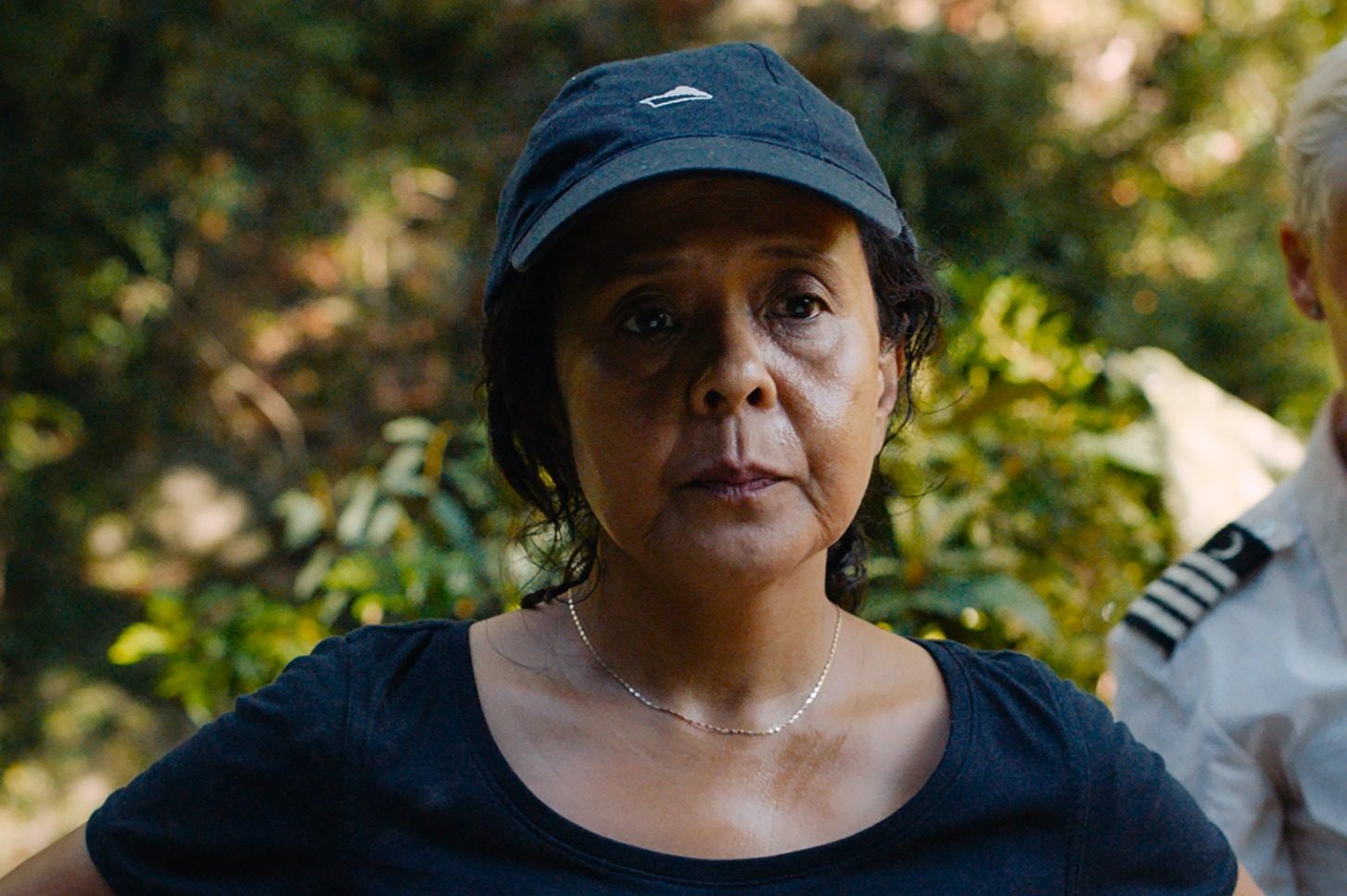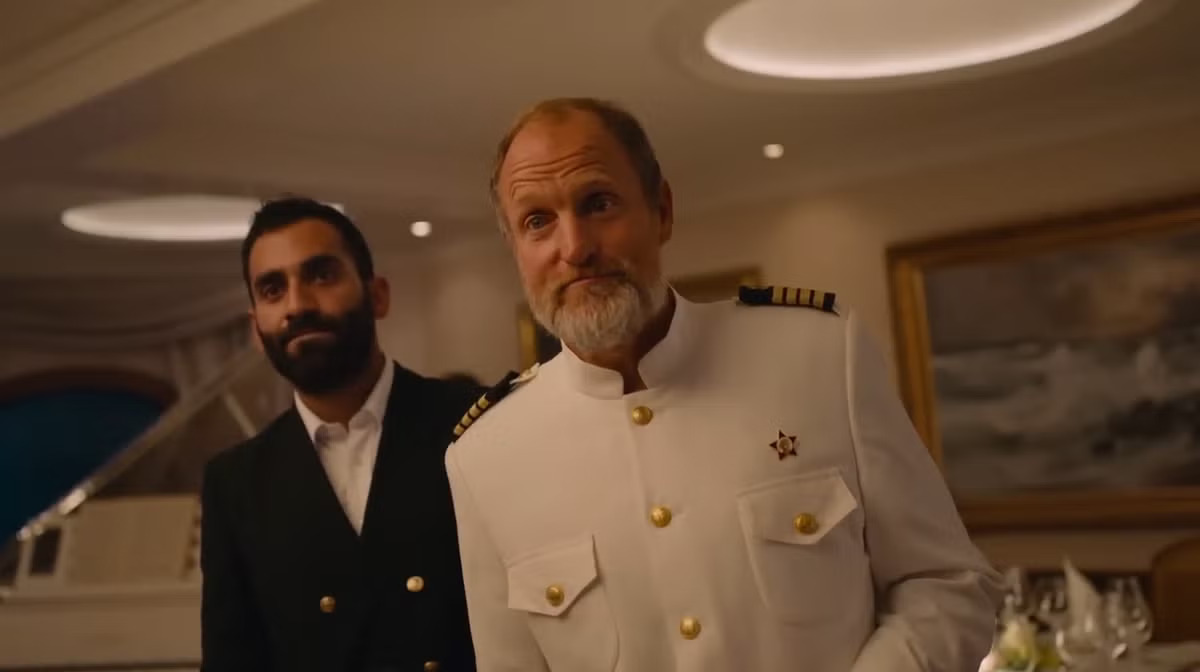Swedish director Ruben Östlund has made an indelible mark on cinema with his latest film, Triangle of Sadness. Following a string of film festival successes, the movie garnered three Oscar nominations, including Best Picture. This dark comedy and satirical exploration of a class divide stars Woody Harrelson, Harris Dickinson, Dolly De Leon, and the late Charlbi Dean.
Its unpredictable, rollercoaster-like narrative takes viewers from the high-fashion world to a luxury yacht, and finally to a deserted island, with a suspenseful, ambiguous ending that lingers long after the credits.
The movie begins by introducing a couple, Yaya (Charlbi Dean), a successful model, and Carl (Harris Dickinson), an aspiring male model. Their relationship exposes an imbalance of power, with Yaya being more financially successful. Carl’s inability to keep up with her wealth leads to a fragile sense of masculinity.
Yaya, on the other hand, manipulates the situation for her benefit, though both of them quickly realize that their petty quarrels do not matter. Their partnership is ultimately a publicity stunt designed to grow their Instagram followings. Yaya’s fame and status bring them luxury perks, including an all-expenses-paid trip on a lavish cruise.

Yacht Trip: Encountering Wealth and Class Divisions
On the cruise, Yaya and Carl meet a group of wealthy, eccentric individuals. The film cleverly depicts the social hierarchy aboard the yacht, with the passengers at the top, the staff in the middle, and the workers (cleaners and kitchen staff) at the bottom. Woody Harrelson’s Captain, perpetually drunk, provides comic relief while exacerbating the tension between the different groups.
When the yacht encounters rough waters, the guests suffer extreme seasickness, leading to chaos. In a surprising twist, pirates attack the yacht, taking the survivors to a deserted island, and leaving behind a fascinating exploration of survival and class.
Once stranded on the island, the class disparities become even more glaring. The rich and helpless passengers now depend on Abigail (Dolly De Leon), one of the boat’s cleaners, to survive. Abigail’s knowledge of survival skills elevates her to a position of power, much to the dismay of the other survivors.
She fully embraces her newfound authority, taking control of their resources and decisions. Carl and Abigail form a transactional relationship, with Carl gaining comfort and food in exchange for satisfying Abigail’s personal needs. Meanwhile, Yaya’s jealousy grows as she realizes her former position of privilege is no longer secure, and a rivalry begins to brew between her and Abigail.
The tension between Yaya and Abigail comes to a head in the final moments of the film. The two women set out on a hike to find shelter or a way off the island. Along the way, they stumble upon a luxury resort hidden in the mountains, highlighting the stark contrast between their survivalist reality and the wealth they once enjoyed.
Yaya is momentarily comforted by the irony, but Abigail harbors darker thoughts. As Yaya revels in the discovery, Abigail silently picks up a large rock and approaches her, contemplating violence. Just as Abigail prepares to strike, the scene abruptly cuts to black, leaving the audience in suspense.

Östlund’s Use of Ambiguity to Engage Viewers
Ruben Östlund’s decision to leave the film’s conclusion unresolved is a brilliant narrative choice. By cutting to black just as Abigail is about to potentially kill Yaya, Östlund opens the door for audience interpretation. The ambiguous ending invites viewers to examine their own values, particularly in regard to class, morality, and survival.
The choice between understanding Abigail’s desire to maintain power or condemning her violent act allows the audience to complete the story in their own way. This ambiguity makes the film both an intellectual and emotional experience, provoking thought long after it ends.
The film’s impact is strengthened by the nuanced performances of Charlbi Dean and Dolly De Leon. Both actresses convey a range of complex emotions with subtlety and precision, making the rivalry between Yaya and Abigail compelling. In the final moments, as Yaya offers Abigail a potential job after their rescue, the weight of the offer becomes clear:
Yaya might be trying to make amends, but Abigail’s fear of returning to servitude complicates any sense of reconciliation. These performances, coupled with Östlund’s sharp direction, create a dynamic that adds depth to the film’s moral questions.
Triangle of Sadness continues Östlund’s tradition of using biting satire to explore societal issues. The film offers a critical lens on wealth, class, and power dynamics, a theme Östlund has explored in previous films like Force Majeure and The Square.
His sharp commentary on the absurdity of societal hierarchies is woven throughout the narrative, and the film’s unpredictable twists keep the audience on edge. Östlund’s unique ability to blend humor with uncomfortable truths creates a space for viewers to confront their own biases and assumptions about social inequality.
Triangle of Sadness is a profound satirical work that challenges traditional narratives of power, class, and morality. Through Östlund’s expert direction and the strong performances from his cast, the film presents an engaging yet thought-provoking experience.
The film’s open-ended conclusion forces the audience to grapple with the questions it raises about societal structures and individual choices. By leaving the final outcome in the viewers’ hands, Östlund encourages personal reflection on the consequences of power and privilege, making Triangle of Sadness a must-watch film for both its entertainment and its moral depth.



